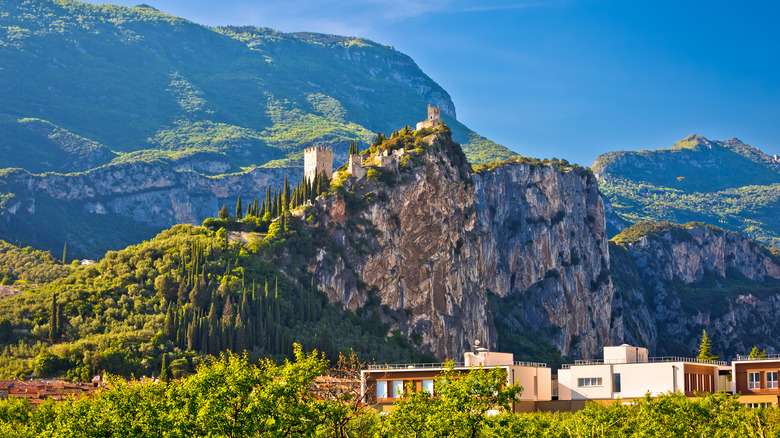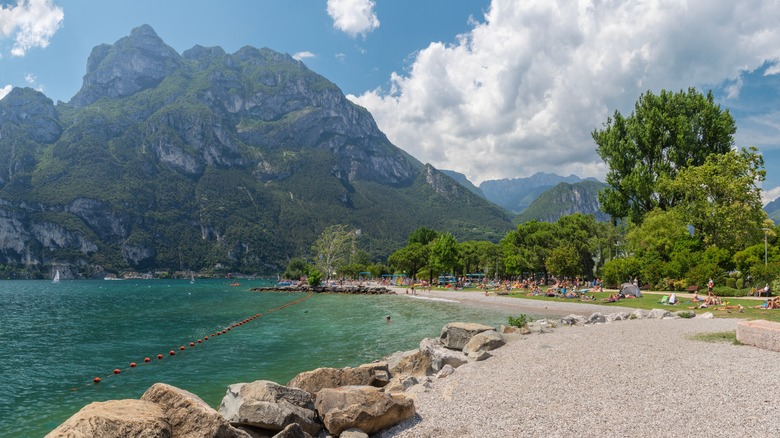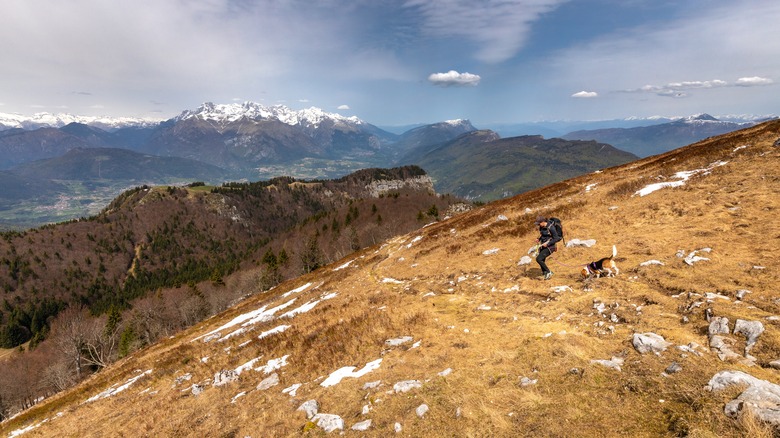Italy's Castle-Topped Town Offers Lake Garda Beaches And Unmatched Mountain Hikes Without The Crowds
Lake Garda bridges the gap between the jagged Alps and the rolling winelands of Northern Italy. It crosses three Italian regions and reigns as the largest lake in the country. Most of all: It's utterly, utterly beautiful. From the hidden paradise of Punta San Vigilio in the south all the way to the resort town of Malcesine beneath the wildflower-speckled ridges of Monte Baldo, it's got oodles of nooks and crannies. But, with over 25 million annual visitors, dodging the crowds can be tricky. That's where little Arco comes in.
Arco rests below the craggy limestone bluffs of Trentino-Alto Adige, a 10-minute drive north from Garda's glittering lakeshore. It has established itself as a bit of a climbing hub thanks to the 100-plus crags and abundance of via ferrata in the surrounding valley. But it's also not quite the A-lister — towns on the water's edge tend to steal the limelight in these parts! The upshot? Arco beckons with mountain adventures, enchanting old town feels, and good proximity to the lakes, only without the hordes of people.
Verona's Villafranca Airport is the favored gateway to all the major resorts that string up and down Lake Garda's banks. Rent a car there and you can cruise up to Arco in just over an hour. Although you may want to consider taking the ultra-scenic route that skirts the eastern shoreline through pastel-painted towns, which still takes only one and a half hours. There are also regular Trentino region buses that connect Arco to the northern side of the lake, including directly to towns like Torbole and Riva del Garda.
Between the castle and the beaches in Arco
Arco is capped off by a castle that's sure to get the gasps a-going. It's the first thing that will likely draw the eye here, so hike up the crooked stone alleyways from the center, through the groves of oaks and olive trees, to get to the top. It's worth it for the views alone — the cobalt hues of Lake Garda will be visible to the south, while the muscular top of Monte Stivo will dominate to the west. History buffs can take time to step inside the old fortress, which is thought to have been a stronghold for around 2,300 years!
The old town curves around the castle's mount below. It's a maze of bustling piazzas and slender alleys where palaces, parks, and pretty churches pop up here and there. You could spend days people watching over an espresso in the piazza bars, but don't forget that Garda's beaches are never far away. In fact, there's a dedicated cycle path that snakes beside the Sarca River all the way to the pebbly beaches of Torbole. It takes 20 minutes to complete and finishes with the glass-clear waters of Spiaggia di Torbole, a veritable water sports mecca.
It's only another 10 minutes to cycle along the banks to Riva del Garda. Here, a series of conch-shell coves thread their way through pine groves and parklands on the side of the lake. They're often abuzz with families and sunbathers, but have jaw-dropping views of the precipitous mountains that overshadow this end of the water.
Arco is for hiking in the Garda Alps
Arco has mountains to the north, to the east, and to the west. The town itself is the nerve center of a web of spectacular hiking paths that range from easy riverside strolls to high-mountain climbs. Looking for something relaxing? Wander from the main piazza to join the multi-use cycle and walking path along the Sarca River going north, through wine country and forests of olive trees.
More challenging is the route that zigzags through the agricultural terraces on the west side of town. It begins in the village of Varignano, brushes past the timeless mountain hamlet of Canale (one of the most beautiful highland settlements in the country, they say), and ends at an under-the-radar lake in the Tenno valley, where you can swim in turquoise water below the summits of the Alps.
Those really looking to push the hamstrings can set their sights on the higher peaks that rise around the northern edge of Garda. Arco is a good access point for the trail up Monte Misone, for example. It's a gnarled summit nearly 6,000 feet high, where panoramas that involve the Brenta Dolomites and Lake Tenno await at the top.


